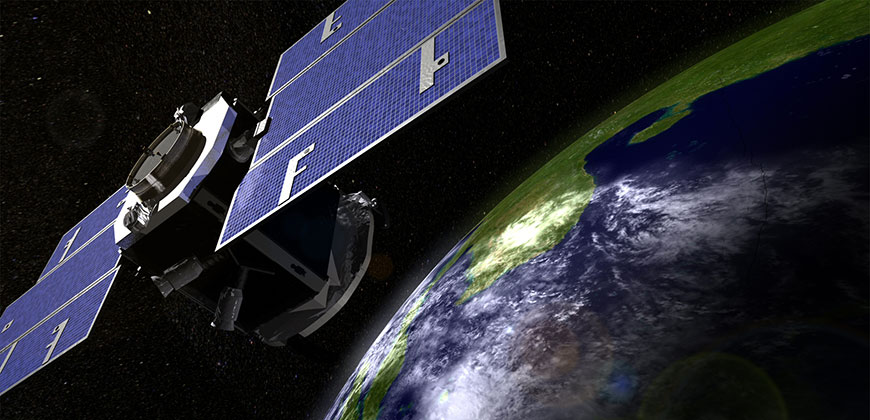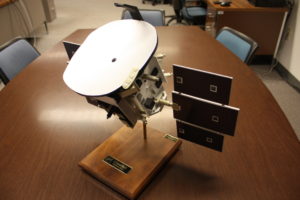
An artist’s concept of CloudSat. Credit: NASA
In April 2006, a NASA satellite called CloudSat launched from Vandenberg Air Force Base in California. Threading the horizon that day was a unique set of sturdy, workhorse cloud-observation instruments that have since changed cloud and climate science forever.

Planned as a 22-month mission, CloudSat has crushed its mission goals and is still collecting data a decade after launch. As the second of NASA’s Earth System Science Pathfinder missions, CloudSat has lasted two decades past its original concept developed in the 1990s.
The mission was conceived at Colorado State University, led by then-CSU faculty member Graeme Stephens, now head of the Center for Climate Sciences at NASA-Jet Propulsion Laboratory. The satellite was built by Boulder-based Ball Aerospace & Technologies Corp.
Processing CloudSat data at CIRA
For the last 10 years, the Data Processing Center (DPC) at the Cooperative Institute for Research in the Atmosphere (CIRA), a NOAA institute working in partnership with CSU’s Department of Atmospheric Science, has been gathering, analyzing and sharing CloudSat data. According to DPC manager Phil Partain, nearly 1.5 petabytes of CloudSat data and 43 million files have been distributed to 64 countries.
The DPC, in partnership with several other universities and research centers, is responsible for converting CloudSat radar data into products useful for weather and climate scientists all over the world.
Profound impacts on cloud climatology
CloudSat has been circling 438 miles above earth since April 28, 2006, collecting high-resolution, vertical profiles of clouds. The first radar to look at the characteristics of clouds in this manner, with particular attention to moisture content, CloudSat has added profoundly to the body of knowledge around cloud formation and climate change.
“It’s hard to read anything now about cloud climatology without seeing the word ‘CloudSat’,” said Matt Rogers, a CIRA research scientist who previously worked on the CloudSat mission. “It has been far and away one of the most valuable things we’ve done for cloud observations.”
CloudSat is operating on one of two working klystrons, vacuum tubes that amplify radio frequencies. Back in 2011, Cloudsat was taken offline to deal with partial battery failure – an eventuality with any battery-powered operation. Scientists found a workaround by allowing the satellite to run during the day and shut off at night. This solution has allowed the mission such an impressively long life.
The A-Train
CloudSat flies as part of the NASA “A-Train” series of satellites, which also includes CALIPSO, CloudSat’s sister that launched aboard the same Delta II rocket in April 2006.